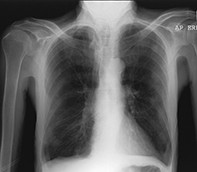Peer Reviewed
Feature Article COPD
Managing COPD in the new millennium
Abstract
Chronic obstructive pulmonary disease (COPD) is the third leading cause of disease burden in Australia, but management of the condition is far from optimal. Increased awareness of the disease and adherence to published guidelines for diagnosis and treatment are needed to meet the goals of improving patients’ quality of life and avoiding hospitalisation.
Key Points
- A diagnosis of COPD should be considered in any patient who has a smoking history of more than 10 pack-years, especially if typical symptoms such as chronic cough, sputum production or dyspnoea are present.
- Spirometry is mandatory to confirm a suspected diagnosis of COPD and to exclude asthma.
- Smoking cessation is the single most effective measure for preventing development of COPD and slowing its progression. Patients should be informed that it is never too late to stop smoking.
- Although there is evidence to support the use of pulmonary rehabilitation programs for patients with COPD, such programs are highly underutilised. All regional health services should be able to organise access to a pulmonary rehabilitation program.
- Management of COPD is suboptimal. Poor adherence to published guidelines for diagnosis and management and patient noncompliance are contributing factors.
- New and exciting treatments for COPD may be not far over the horizon. These will improve our existing therapies but will need to be used judiciously.
Purchase the PDF version of this article
Already a subscriber? Login here.

